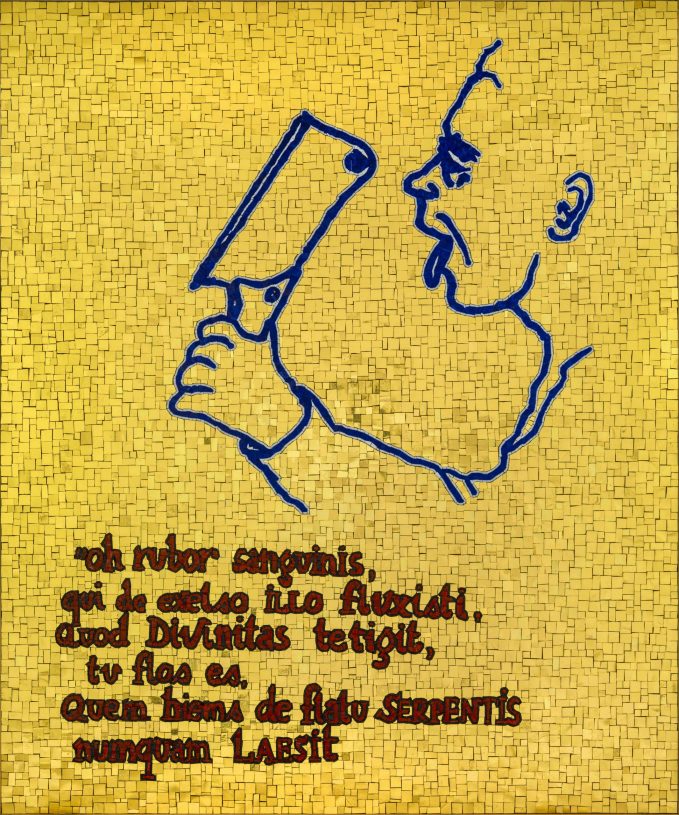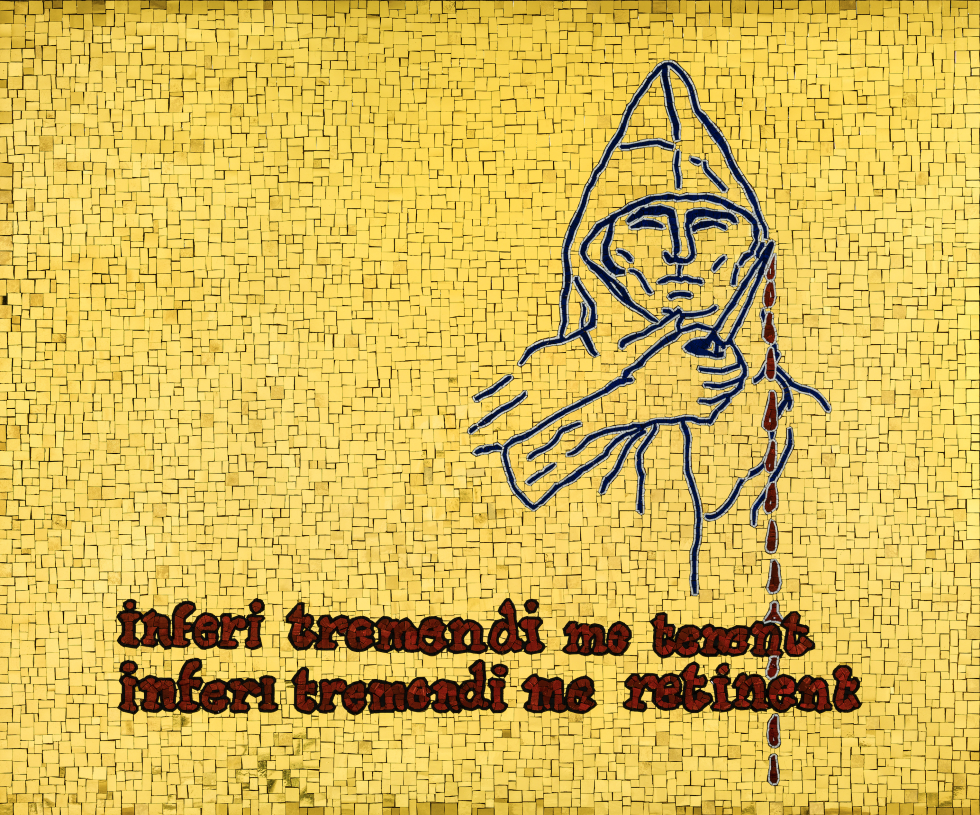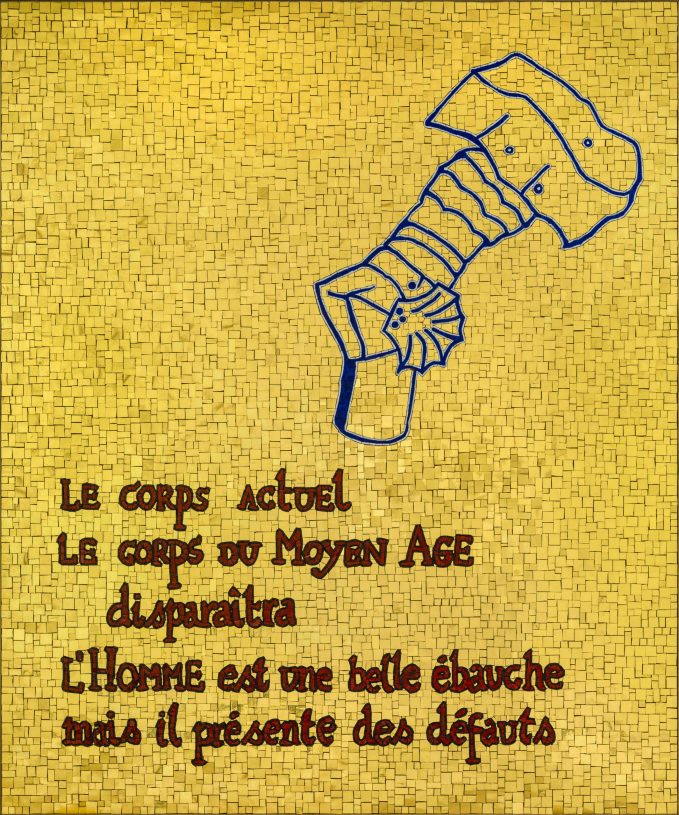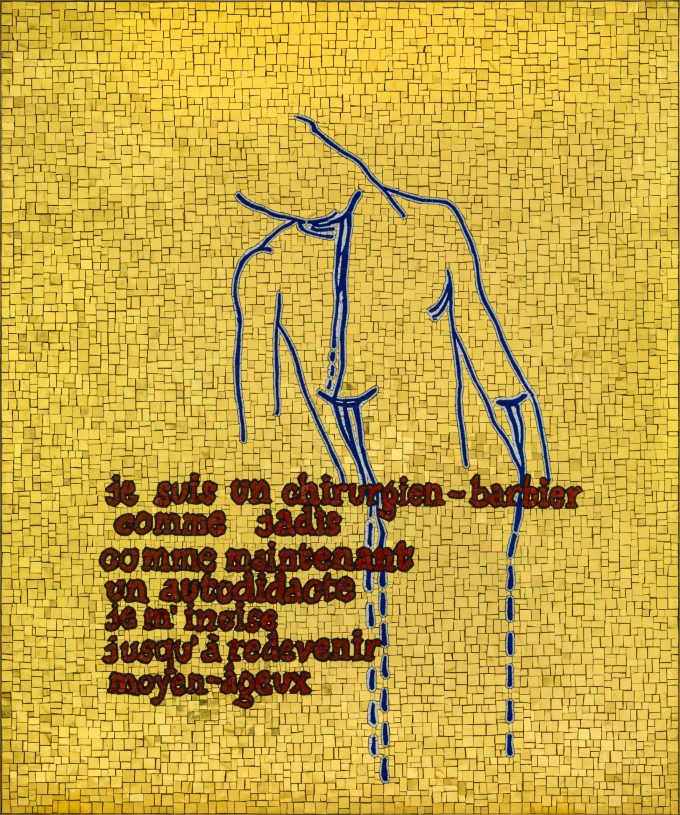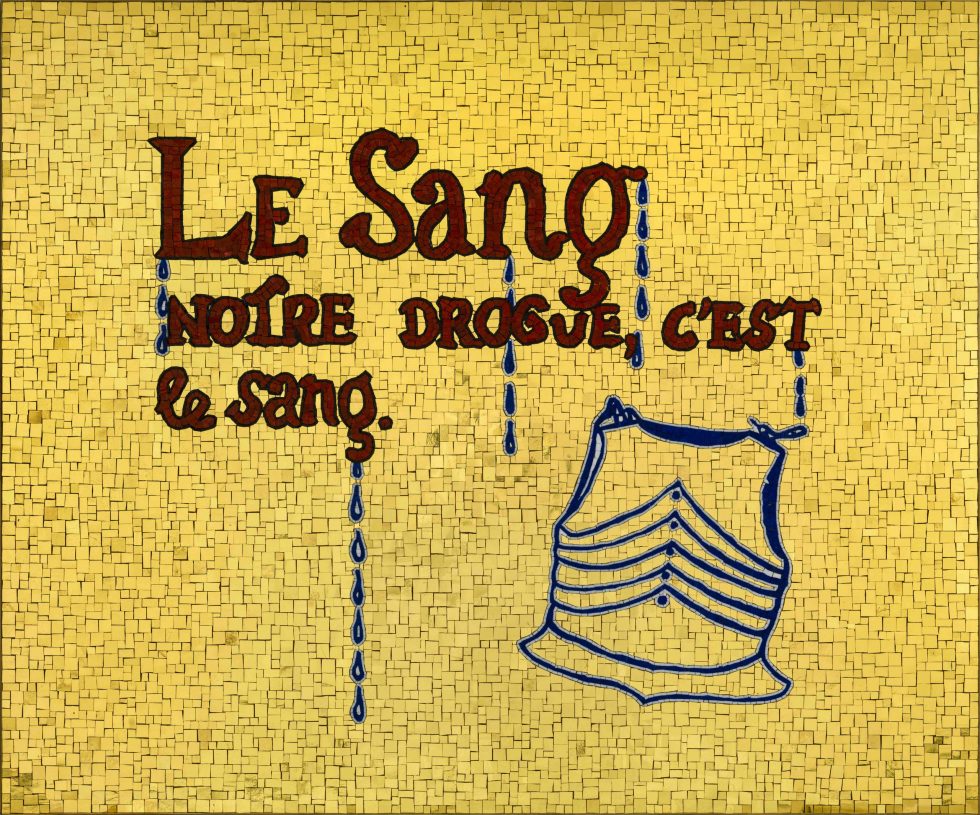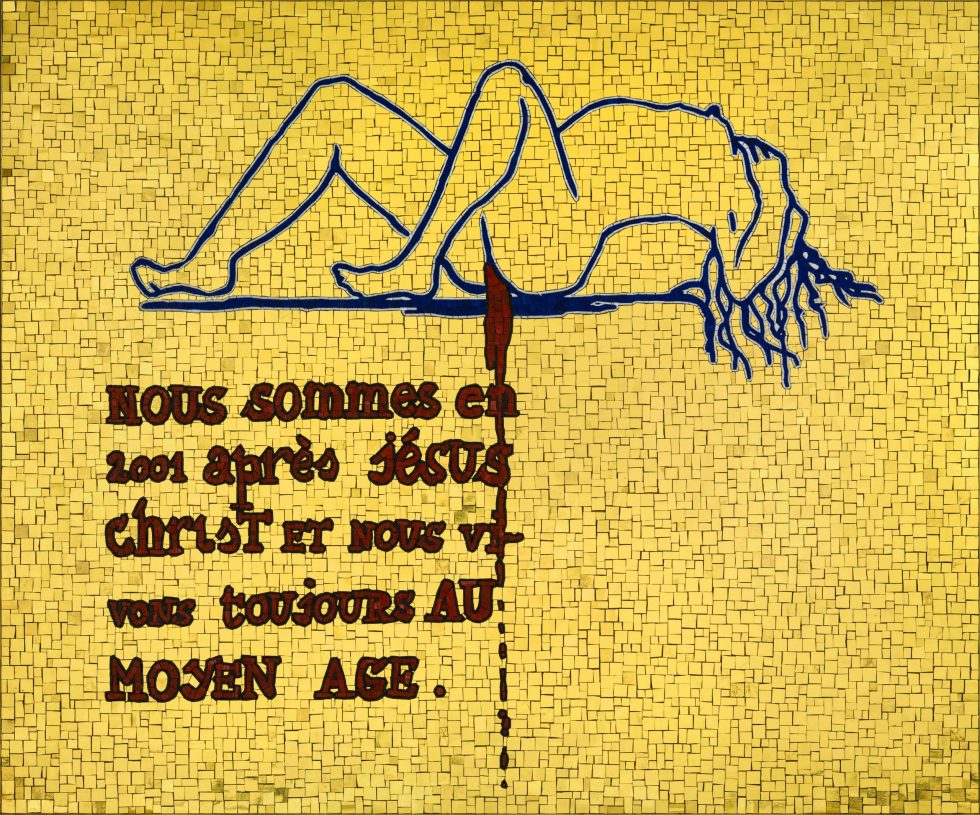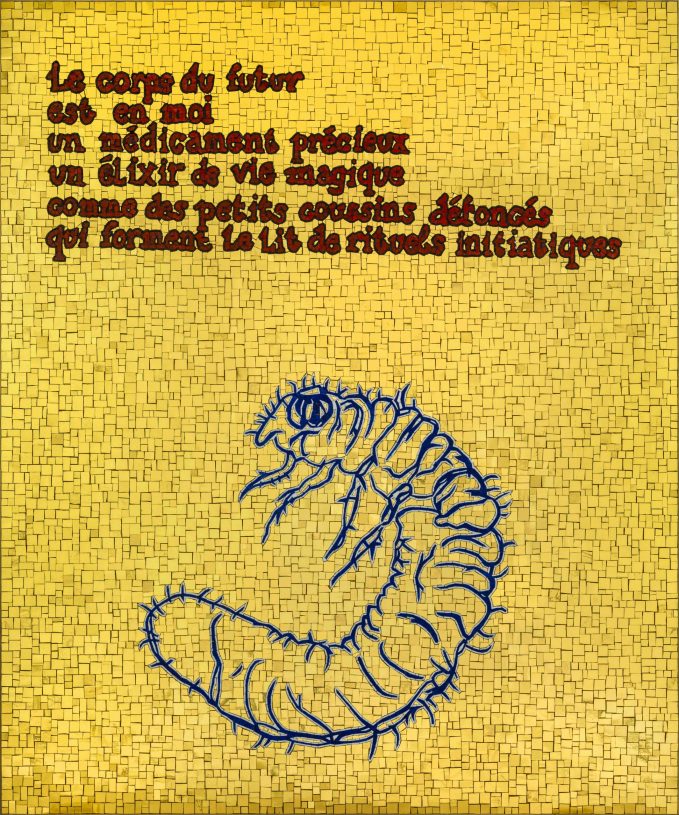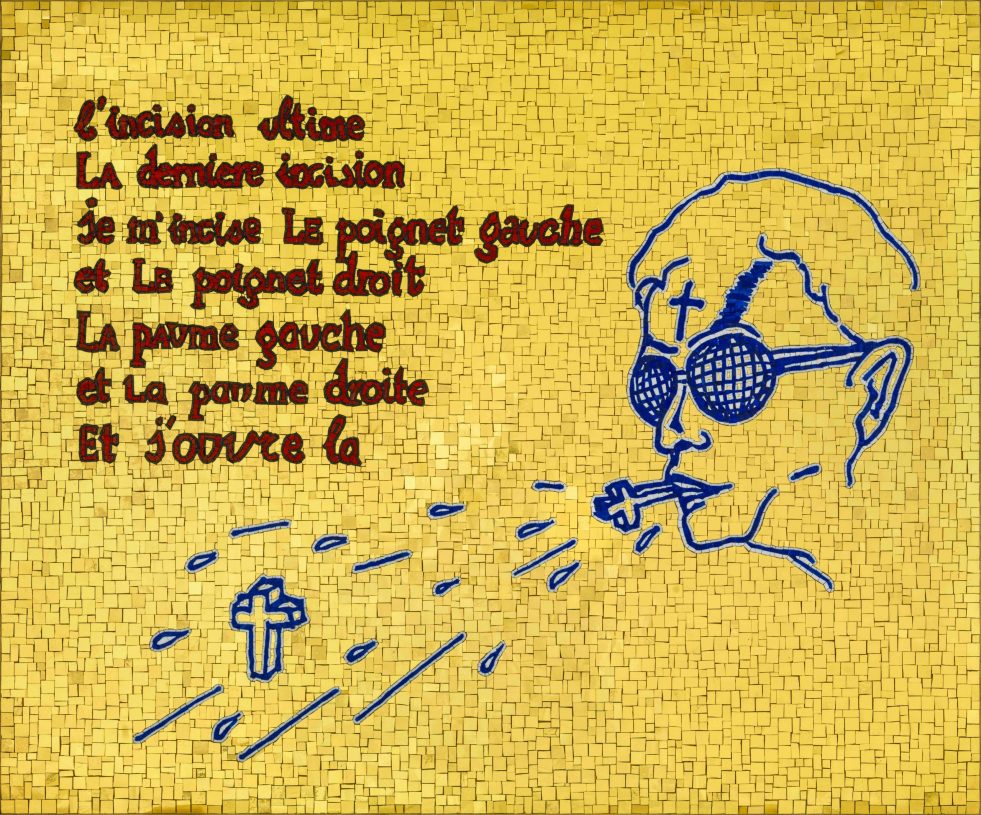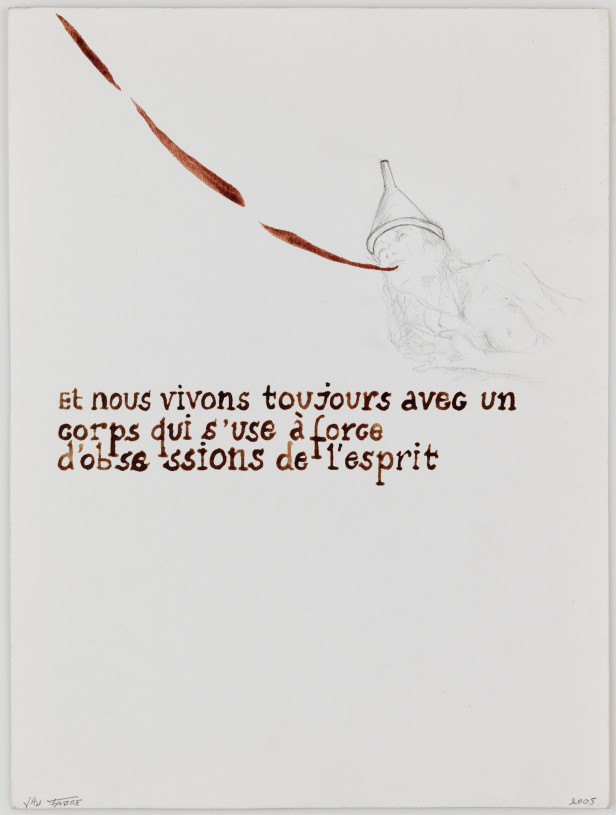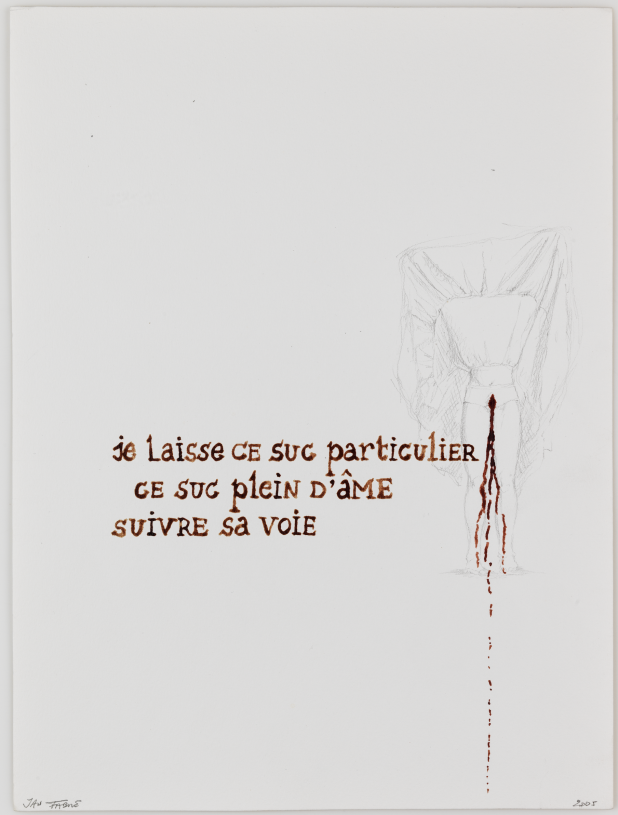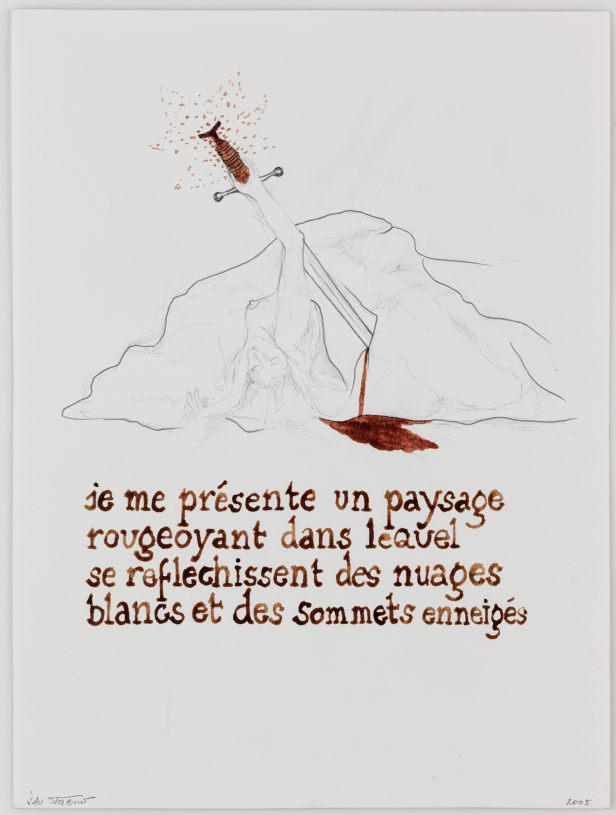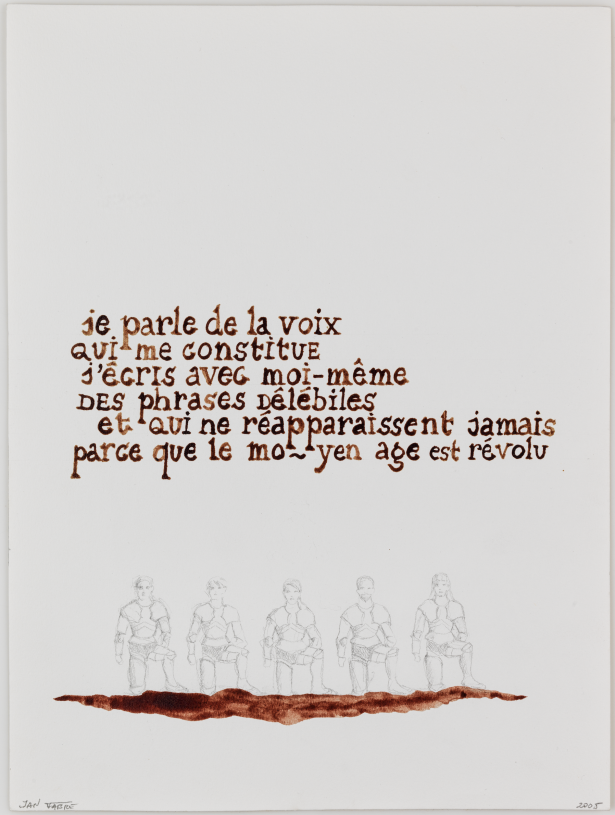Jan Fabre
I AM BLOOD
Curated by Katerina Koskina
curator's note

Je suis (mon) sang – I am (my) blood – Είμαι (το) αίμα (μου)
The exhibition I am blood by Jan Fabre, on show at the Crux Galerie in Athens, uses art to pose matters of human nature through behaviours and practices which humans themselves would inscribe as inhuman. It also visualises, in the form of handwritten text, innermost thoughts and narratives which exacerbate the cruelty of the subject. Yet the works still charm the viewer with their aesthetic and their impeccable technique, in what is old story in art history—the conflict between surface-image and content-subject.
The combination of works from the new series of 2023 with 24-carat gold tiles painted with enamel and his 2005 drawings with blood and ΗΒ pencil on paper constitutes a visual review of the paradoxical coexistence of barbarity and spirituality in humans. With his works the artist denounces the dramatically unchanged violence and molestation of man by man, and at the same time he demonstrates our ability to sidestep the issue and judge an artwork by different criteria. Indeed, our museums are full of artworks with horrible acts: decapitations, crucifixions, dead bodies, abducted women and torture.
For all the millions of years from the time of anthropoids to this current digital age and the ground-breaking invasion of virtual reality and artificial intelligence into our daily lives, our own innate intelligence seems to have accepted the savagery, the cruelty, the propensity to destroy, the pleasure of molesting. This is corroborated by the fact that blood, the most precious element in our body, has never ceased to flow everywhere to the detriment of the human species and in almost all aspects of life—and art has never been an exception to this.
With his literally blood-drenched drawings—not products of violence, though, since he turns his own blood into a pigment combined with pencil—and his “precious and glittering” wall-mounted mosaics with gold and enamel, Jan Fabre makes a third ‘return’ to his emblematic Je suis sang of 2001. At the time the work had attracted a lot of interest and debate due to its direct allusion to the ailing human body, across time and mostly in medieval times. At the centre was blood as a primary element of human existence, and was present visually, symbolically, ritualistically, as a result of felony, violent attack or heroism. This immersive image, commissioned by the Festival d’Avignon specifically for the Cour d’Honneur of the Palais des Papes, was based on Jan Fabre’s eponymous medieval poem which the artist staged and choreographed complete with 22 actors and live music.
The body, a field of taboos and passions, provocation and eroticism associated with blood—wounds, menstruation, stigmata as divine or demonic intervention, ‘blood baths’—reflects the unaltered human condition. It is true that to this day we talk much about blood and the organ that circulates it, the heart, and we rate relationships and acts according to shared blood or the amount of blood expended, if only symbolically. We perceive the red, fluid substance as a precious vital element of our existence, a gift we can give, a bearer of physical and metaphysical dimensions, a trophy associated sometimes with emotion and praise and sometimes with pain and punishment, and we accompany it with the possessive adjective ‘my’.
The present exhibition represents an immersion into this subject area, with the emphasis on the relationship between body, blood and religious or mystical as well as artistic experience. The mosaics and drawings in the I am blood series focus on physical and mental wounds. Moreover, the dominance of gold in the background of the mosaics alludes to the divine light and immortality, while the subjects are associated with self-sacrificial knights, the annihilation of ‘dragons’ towards a better world but also with torture and the unhealed wounds of the human body and spirit.
Mosaic, one of the earliest techniques at the service of art, was historically used to depict religious and mythical subjects as well as scenes from everyday life and fantasy images. From Sumerians to the Byzantine Empire, mosaics were employed as tools for narrating, reaching its highest degree of recognition in Constantinople and Ravenna.
Gold in Fabre’s new series follows the rules of the Byzantine rendering of the immeasurable space of eternity where the Saints are bathed in divine light, suggesting the connection between Heaven and Earth. In the performance Je suis sang which was the starting point for this visual project, blood is presented as what determines human history as well as the theatrical stage. Fabre is not a passive observer. He is an active artist, an inexhaustible experimenter, a multifaceted creator and writer, a man of thinking and dialectics who tirelessly dissects and studies the field of art, traversing centuries and revealing his sources and his ‘heroes’. The scenes that unfold in his mosaics are reminiscent of the scenes painted by Pieter Brueghel the Elder and Hieronymus Bosch, with the allegories of blood and the body expressing the human trauma and the transcendental rebirth.
This artistic view of blood and the body as bearer of the traumas and taboos of the past and the present has deep roots in European and particularly in Flemish painting. Fabre’s emphasis on the medieval body, on ritualistic torture and on scenes of blood and mutilation underscores the constant presence of violence and pain as central to the human history. At the same time the blending of pre-modern elements such as barbers-surgeons and knights into a contemporary aesthetic result in a new narrative that reflects human obsessions and the narrative motifs and symbols derived from them. The reference to the medieval body and bodily wounds brings to light the historical memories of the Middle Ages, an age when religious faith, irrespective of doctrine, went together with physical pain. The scenes that Fabre presents in his work are not meant to portray the testimonies of the annihilation of the ‘infidels’ as religious victories, but rather to convey the painful and humiliating human experience. The figures, drawn over a gold backdrop or with blood on paper, combine with the use of writing and mosaic and establish a dialogue between classical, folk and contemporary art, demonstrating the timelessness of these themes and undermining the obsolete distinctions between major and minor arts.
The same works reflect Fabre’s interest in the anatomical research of Andreas Vesalius. With his treatise De Humani Corporis Fabrica, Vesalius overturned the traditional views on anatomy and promoted the scientific study of the human body in an age of religious and scientific upheavals.1 His work reflected the need of human society for a new understanding of existence, and the same is echoed in the art of Fabre, which teems with references to the great tradition and the subject area which was pursued by eminent medieval painters and “is now coming back through a new approach”.2 With his use of traditional techniques like mosaic, his employment of specialised craftspeople and above all with his exploration of corporeality, which in recent decades has overturned some fundamental stereotypes of humankind, Fabre erects a bridge between past and present.
The use of blood as a ‘bodily sap’ essential for life but also as a means of visual expression and the constant references to the concept of transformation are central to Fabre’s philosophy. Blood—at once a symbol of life and death, of violence, of sacrifice, of the productive function of mammals, of religious rites, of trauma but also of its healing through surgical practices for restoring health or saving lives—reflects the human endeavour to overcome natural boundaries and attain a spiritual transcendence. Fabre demonstrates how old this quest has been through man’s supreme positive expression—art. In this sense, the works in the I am blood series explore the innermost essence of human existence and invites us to follow their maker, a self-proclaimed “knight of despair and servant of beauty”, in the eternal search for the relation between our earthly and ‘spiritual’ nature.
Katerina Koskina
September 2024
press release
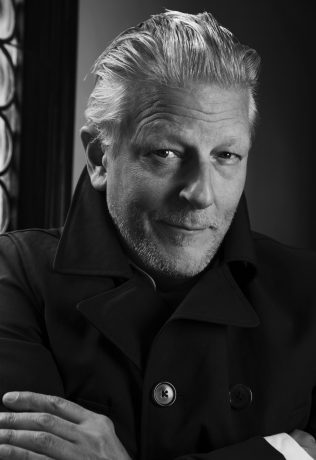
Jan Fabre: I am blood
Duration: 26 September – 16 November 2024
Opening: 26 September 19:00-22:00
Crux Galerie is delighted to present I Am Blood, a solo exhibition by the renowned artist Jan Fabre. Curated by art historian and curator Dr. Katerina Koskina, a long-standing collaborator of the artist, this exhibition features a selection of Fabre’s latest mosaic artworks, where his appreciation of the ancient techniques is exquisitely revealed.
The I Am Blood series, comprises 24-karat gold tiles and smalti mosaics. Jan Fabre, renowned for his “Renaissance approach”, intertwines art, literature, theatre, dance and music with mythology, fairy tales, craftsmanship and science. This series visually reinterprets the themes of Fabre’s iconic performance, Je suis sang, originally commissioned by the 55th Festival d’Avignon for the Cour d’Honneur in 2001, which was exceptionally re-performed in the same festival in 2005. Presented as a medieval poem written and brought to life through direction, choreography and scenography, by Fabre himself, the performance left an indelible mark on the art world with its profound focus on the fundamental component of human existence — blood. The exhibition at Crux Galerie will be enriched by a number of HB pencil and blood drawings on paper, created in 2005, when Je suis sang was traveling in other cities and festivals. Two decades later, during the pandemic, the artist revisited this thematic framework and created a new series using exclusively the technique of mosaic. The works stand out for their minimalist aesthetic, in terms of colour (mainly gold) and form, and are a unique expression of the artist’s multi-dimensional creativity. Through this recent body of works, Fabre continues to challenge, inspire and move, bringing out beauty through the simplicity and timelessness of forms, while honouring ancient techniques.
“Mosaic was used for centuries as a record, a chronicle of stories. Myths, scenes of glory, death or love, sports and feats, everyday objects and habits, images from the living world of land, water and sky, but also religious images and others from the realms of science and imagination. Mosaic has been used to register all these, retaining unaltered for centuries the spirit, the fascination and the truth of their time, as well as their symbolic power.”
Katerina Koskina, excerpt from her essay of the Jan Fabre, MOSAICS, Nov 2023, Edizioni Forma, Florence Italy.
“Fabre is enamoured in the Middle Ages, a period of transition that developed between the collapse of the Roman Empire and the emergence of the Renaissance, and marking the end of the Ancient and the start of the Modern. […] Writing and graphics stand out against a background of gold, the quintessential iconic metal, solar and divine light, liberation, expansion, energy, altruism, purity, mental, spiritual and eternal perfection.”
Giacinto Di Pietrantonio, excerpt from his essay of the Jan Fabre, MOSAICS, Nov 2023, Edizioni Forma, Florence Italy.
About the artist
Jan Fabre (b. 1958, Antwerp) is regarded both in Belgium and abroad as one of the most innovative and versatile personalities in the contemporary international art scene. With a career spanning over 40 years, Jan Fabre has left an indelible mark as a visual artist, theatre artist, and writer. Fabre labels himself a consilience artist, merging elements from different disciplines guided by fact-based theory and practice across disciplines. Through this interdisciplinary approach, he continually offers fresh interpretations while creating an intensely personal visual oeuvre, a unique and coherent universe with recurring symbols and motifs.
Jan Fabre achieved the distinction of being the first contemporary artist to hold solo exhibitions at prestigious institutions like the Louvre Museum in Paris (2008) and the Hermitage in Saint Petersburg (2017). Jan Fabre’s artistic reach extends beyond traditional gallery spaces, integrating artworks into various public locations, such as the Royal Palace (2002), the Musées Royaux des Beaux-Arts in Brussels (2013), the Cathedral of Our Lady in Antwerp (2015), and the Antwerp St. Augustine’s Church/AMUZ (2018).
Jan Fabre’s artistic research and practice are deeply rooted in the rich traditions of ancient Greek mythology, philosophy, and theatre. Drawing from these sources of inspiration, Fabre has consistently engaged with Greek culture, presenting his multifaceted body of work—encompassing visual art, performance, and literature—throughout Greece since the 1990s.
In 2019, Fabre’s profound relation with the history of art and his respect and admiration for the work of artists, as well as authors and scientists, of earlier times, whom he considers his Masters, was further cemented with the installation of four red coral sculptures in the chapel of Pio Monte della Misericordia in Naples, Italy. These works now reside permanently alongside Caravaggio’s work, creating a dialogue between contemporary and classical art that exemplifies Fabre’s ability to bridge historical and modern artistic expressions.

